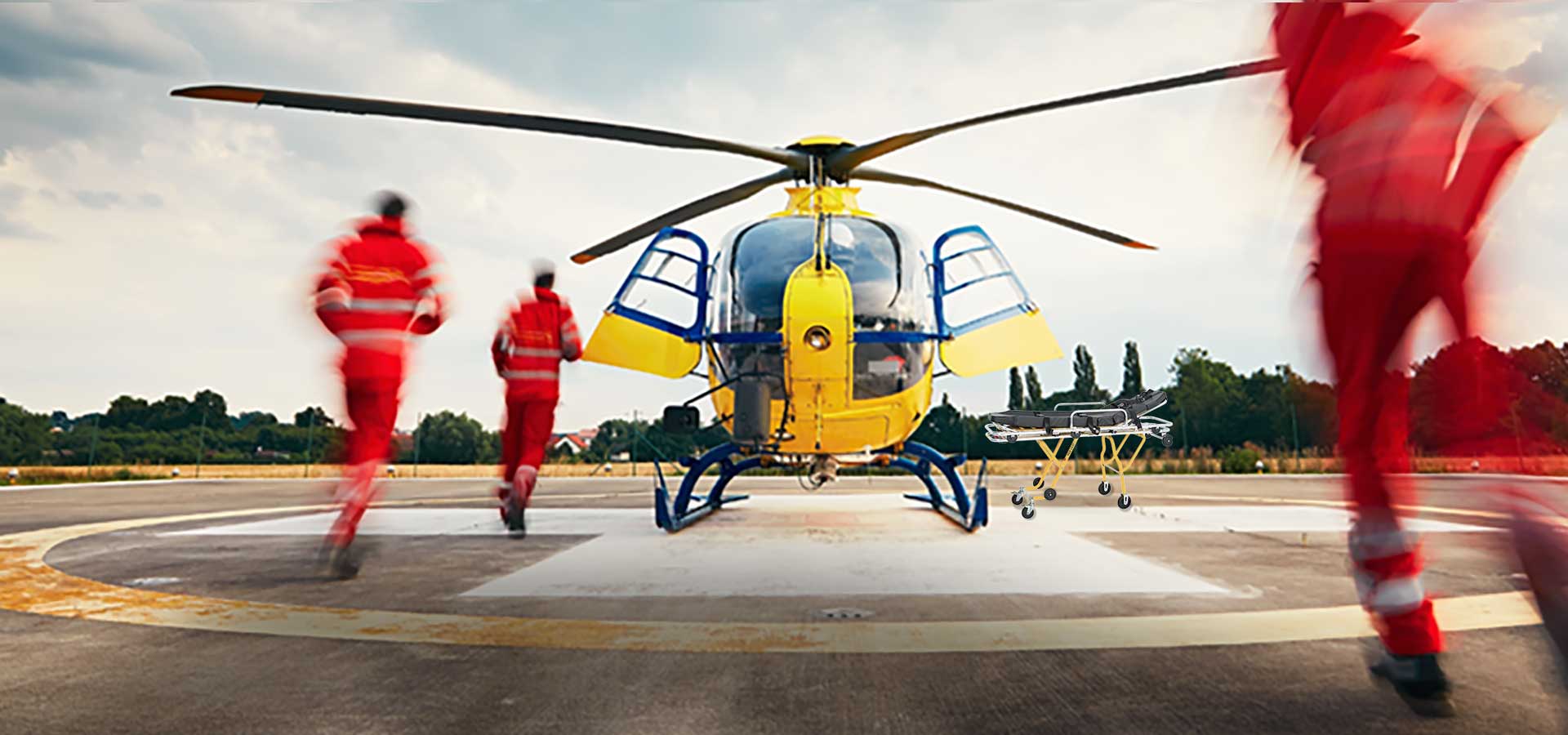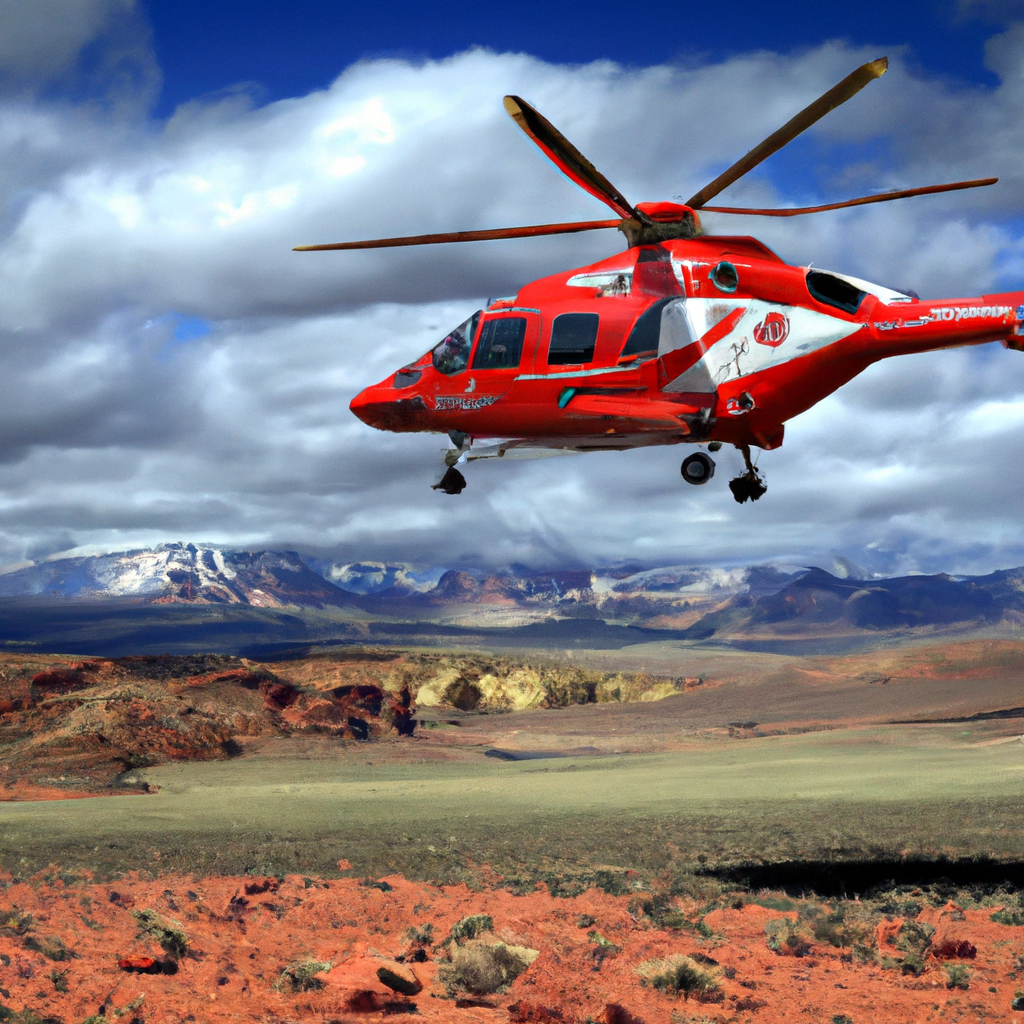So you’re curious about the difference between ground ambulance crews and air ambulance medical teams? Well, you’ve come to the right place! In this article, we’ll be diving into a detailed comparison of these two emergency medical services. Whether you’ve ever wondered about the advantages and limitations of each option, or you simply want to be informed in case you ever find yourself in need of urgent medical transport, this article will provide you with all the information you need. So let’s get started and explore the fascinating world of ground ambulance crews versus air ambulance medical teams!
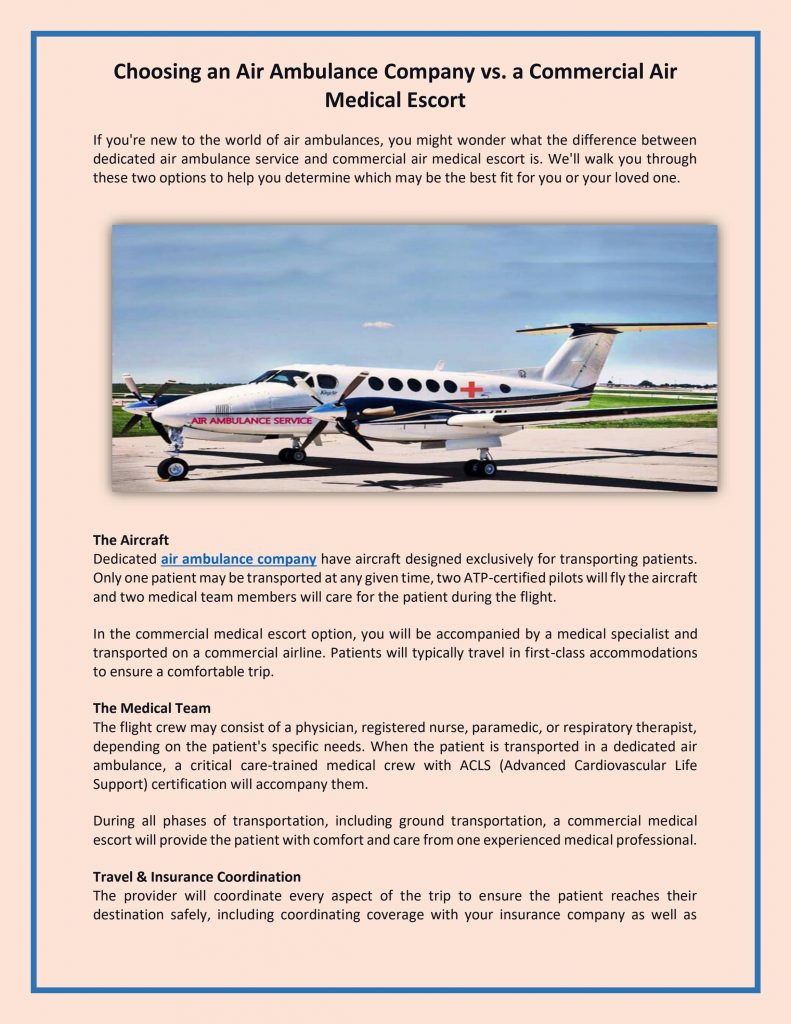
Education and Training
Ground Ambulance Crews
Ground ambulance crews, also known as Emergency Medical Technicians (EMTs) or Paramedics, undergo comprehensive education and training in order to provide emergency medical care on the scene and during transportation to the hospital. EMTs typically complete a certification program, which includes coursework on anatomy, physiology, and emergency medical procedures. They also receive hands-on training in patient assessment, basic life support, and the use of medical equipment.
Paramedics, on the other hand, undergo more advanced education and training. They typically complete a two-year associate degree in paramedicine, which includes advanced coursework in emergency medicine, pharmacology, and cardiology. Paramedics also receive extensive training in advanced life support techniques such as intubation, administering medications, and interpreting electrocardiograms (ECGs).
Air Ambulance Medical Teams
Air ambulance medical teams include highly trained healthcare professionals such as flight nurses and flight paramedics. These individuals have usually already worked as ground ambulance crew members before transitioning to air transport. Flight nurses typically hold a bachelor’s degree in nursing and have several years of experience in critical care or emergency nursing. Flight paramedics, similarly, have typically completed an associate degree in paramedicine and have extensive experience in emergency medical services.
In addition to their previous education and experience, air ambulance medical teams undergo specific training to prepare them for the unique challenges of providing medical care in flight. This training includes topics such as aviation safety, aeromedical physiology, and patient stabilization techniques in a moving aircraft. It also covers the technical aspects of air medical equipment and navigation systems.
Scope of Practice
Ground Ambulance Crews
Ground ambulance crews are primarily responsible for providing emergency medical care and transportation to the hospital. Their scope of practice includes assessing and stabilizing patients at the scene of an emergency, administering medications, performing basic and advanced life support interventions, and coordinating with hospital staff for timely patient handover. They are trained to handle a wide range of medical emergencies, including trauma, cardiac arrest, respiratory distress, and stroke.
Air Ambulance Medical Teams
Air ambulance medical teams have a similar scope of practice as ground ambulance crews, but with some added capabilities. They are trained to provide care in flight and are equipped to handle more complex medical conditions. Air ambulance medical teams often deal with patients requiring critical care interventions, such as ventilator support, intraosseous access, or advanced cardiac monitoring. They are also trained in managing the physiological challenges of altitude and cabin pressure during air transport.
It’s important to note that while air ambulance medical teams have an expanded scope of practice compared to ground ambulance crews, their primary role is still to stabilize and transport patients to appropriate medical facilities. They do not provide full-scale hospital care during transport but rather focus on ensuring stability and optimizing outcomes during the critical transfer phase.
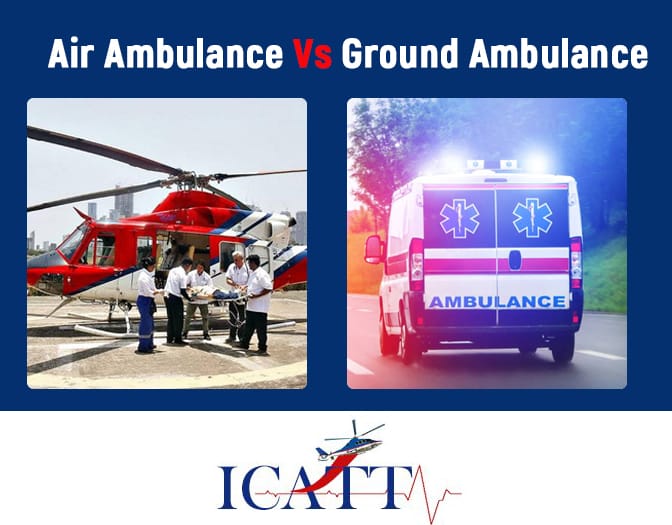
Equipment and Technology
Ground Ambulance Crews
Ground ambulance crews use a variety of medical equipment and technology to provide effective care in the prehospital setting. This includes basic equipment such as ambulances, stretchers, and first aid supplies, as well as more advanced tools like cardiac monitors, defibrillators, and airway management devices. They also have access to medications for pain relief, cardiac support, and allergic reactions.
Additionally, ground ambulance crews utilize communication technology to coordinate with hospitals and other emergency services. This allows for real-time transmission of patient information, ECGs, and vital signs to the receiving medical facility, enabling more efficient and coordinated care.
Air Ambulance Medical Teams
Air ambulance medical teams have access to a similar range of medical equipment and technology as ground ambulance crews, but with some additional capabilities specifically designed for air transport. Air ambulances are equipped with specialized stretchers that can be secured to the aircraft and feature unique safety features to counteract the effects of turbulence. These stretchers also allow for in-flight medical procedures to be performed more easily, such as defibrillation or chest compressions.
Air ambulances are equipped with advanced monitoring systems and ventilators capable of managing patients with complex respiratory needs. They also carry a wider range of medications tailored for critical care situations. Communication technology is also a crucial component of air ambulances, allowing for seamless communication between the medical team in flight and receiving medical facilities.
Transportation Abilities
Ground Ambulance Crews
Ground ambulance crews primarily transport patients via road, using ambulances specifically designed for medical transport. These vehicles are equipped with features to ensure patient safety and comfort during transport, such as secure stretcher systems, climate control, and advanced suspension systems to minimize vibrations. Ground ambulances have the advantage of being able to reach any location accessible by road, including urban areas, suburban neighborhoods, and rural regions.
The transportation abilities of ground ambulance crews also extend to off-road situations, where they can utilize specialized vehicles or equipment, such as all-terrain vehicles (ATVs) or snowmobiles, to access remote or difficult-to-reach areas where standard ambulances may not be able to go.
Air Ambulance Medical Teams
Air ambulance medical teams have the unique ability to transport patients via air, utilizing helicopters or fixed-wing aircraft. This mode of transport allows for significantly faster travel times, enabling patients to reach specialized medical facilities quickly, particularly in cases of critical illness or trauma. Air ambulances can also traverse geographical obstacles such as mountains, bodies of water, or areas with limited or nonexistent road access.
Air ambulances are equipped with the necessary medical equipment and personnel to provide care at high altitudes and during flight. They are staffed with experienced pilots who are skilled in navigating diverse weather conditions and landing in challenging terrains. The ability to transport patients quickly and efficiently is a crucial advantage of air ambulance medical teams, particularly in situations where time is of the essence.
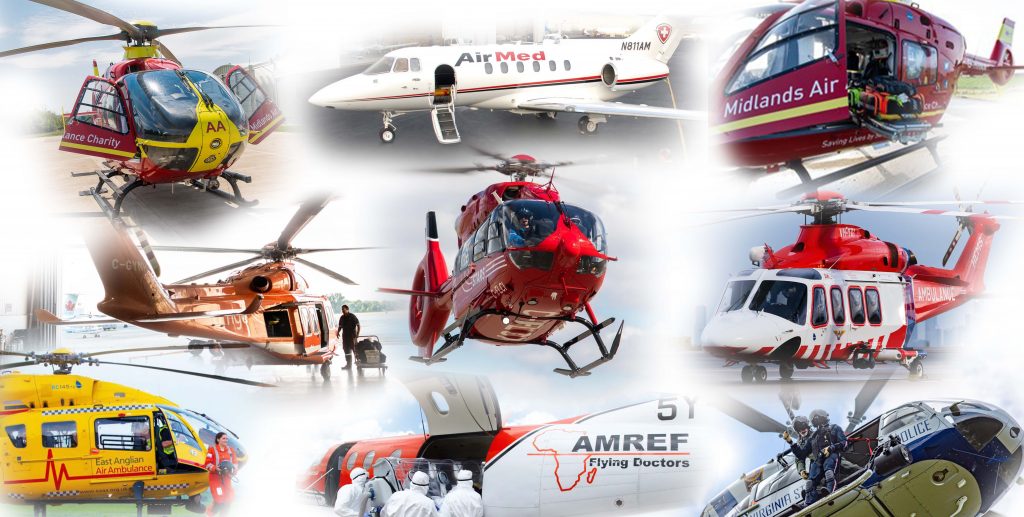
Speed and Time Efficiency
Ground Ambulance Crews
Ground ambulance crews provide emergency medical services with a focus on prompt response and transport to the nearest appropriate medical facility. While they may not have the speed advantages of air transport, they are still able to provide timely care to patients within their service area. Ground ambulances are usually strategically located throughout a region to minimize response times.
The speed of ground ambulance transport depends on various factors, including traffic conditions, distance to the hospital, and the severity of the patient’s condition. While ground ambulance crews strive to reach the hospital as quickly as possible, they also prioritize the safety of the patient and the crew. In situations where traffic congestion is a concern, ambulances may liaise with local authorities to facilitate smoother transportation routes.
Air Ambulance Medical Teams
Air ambulance medical teams excel in speed and time efficiency due to their ability to bypass ground traffic and travel directly to specialized medical facilities. Helicopters and fixed-wing aircraft used by air ambulances can reach speeds of up to 150 miles per hour, significantly reducing travel times. This speed advantage is particularly crucial for patients requiring urgent medical attention, such as those with severe trauma or time-sensitive medical conditions like stroke or heart attack.
The rapid response times and fast transport capabilities of air ambulance medical teams contribute to improved outcomes for critically ill or injured patients, as they can receive higher levels of care at specialized facilities in a shorter time frame. Time is a critical factor in the success of many medical interventions, and air transport helps to minimize delays in accessing appropriate medical resources.
Access to Remote Locations
Ground Ambulance Crews
Ground ambulance crews are well-equipped to reach patients in most areas accessible by road. They can navigate through urban environments, suburban neighborhoods, and rural regions to provide critical care and transport. However, when it comes to reaching remote or isolated locations, such as areas with limited road access or challenging terrain, ground ambulance crews may face limitations in providing timely care.
In these situations, ground ambulance crews often collaborate with other emergency services, such as search and rescue teams or helicopter units, to ensure that patients receive the necessary care as quickly as possible. This collaborative approach ensures that patients in remote locations are not left without medical assistance while awaiting transport to definitive care.
Air Ambulance Medical Teams
Air ambulance medical teams have a significant advantage when it comes to accessing remote locations. Helicopters and fixed-wing aircraft used by air ambulances can land in remote or isolated areas that may be inaccessible by road. This includes mountainous regions, offshore islands, or areas with limited infrastructure.
By utilizing air transport, air ambulance medical teams can rapidly reach patients in these challenging locations and provide critical care. This ability to access remote areas is particularly crucial in situations where time is of the essence, such as in cases of severe trauma or medical emergencies occurring in isolated communities.
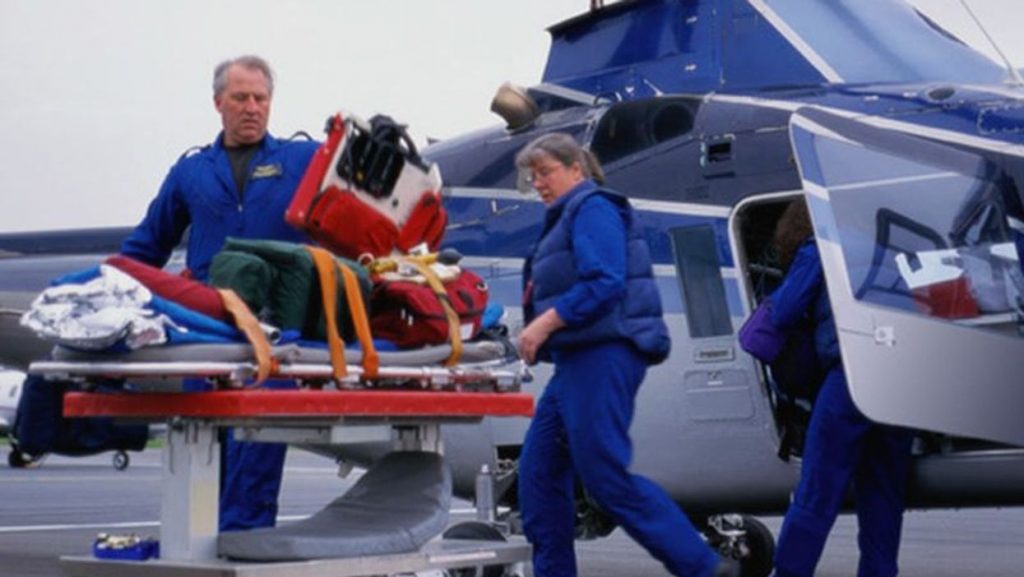
Patient Safety and Comfort
Ground Ambulance Crews
Ground ambulance crews prioritize patient safety and comfort throughout the transportation process. Ambulances are equipped with features designed to ensure stability and minimize the impact of vibrations or sudden movements on the patient. The crew secures the patient to the stretcher using restraints to prevent injuries during transport and ensures the patient is positioned in a manner that promotes comfort and breathing.
Additional measures are taken to optimize patient safety during transport, such as monitoring vital signs, administering appropriate medications, and providing necessary interventions like oxygen therapy or wound management. The crew also strives to create a calm and reassuring environment for the patient, as psychological well-being is an essential aspect of patient comfort.
Air Ambulance Medical Teams
Air ambulance medical teams go the extra mile to ensure patient safety and comfort during air transport. The specialized stretchers used in air ambulances are designed to secure the patient to the aircraft and minimize the impact of turbulence. They also allow for in-flight medical procedures to be performed safely and efficiently.
The medical team continuously monitors the patient’s condition, vital signs, and response to treatment during the flight, making necessary adjustments and interventions to ensure optimal care. Patients requiring critical care interventions receive the same level of monitoring and support as they would in a hospital setting.
In terms of comfort, air ambulances are equipped with climate control systems to maintain a comfortable temperature during the flight. The medical team also provides psychological support to patients during transport, recognizing the potential anxiety or stress associated with air travel. Patient safety and comfort are paramount for air ambulance medical teams, as they strive to provide a high level of care throughout the transportation process.
Medical Interventions
Ground Ambulance Crews
Ground ambulance crews are trained to perform a wide range of medical interventions, both basic and advanced. They are proficient in providing basic life support techniques such as cardiopulmonary resuscitation (CPR), defibrillation, airway management, and splinting fractures. They also have the ability to administer medications such as analgesics, antiarrhythmics, and bronchodilators.
In some jurisdictions, advanced interventions such as advanced airway management (endotracheal intubation), administration of intravenous fluids, and interpreting ECGs may be within the scope of practice for paramedics. These advanced skills enable ground ambulance crews to stabilize patients and initiate appropriate treatment while en route to the hospital.
Air Ambulance Medical Teams
Air ambulance medical teams have a similar scope of medical interventions as ground ambulance crews, but with some added capabilities. Due to the critical care nature of many air ambulance transports, the medical team is trained to provide advanced interventions specific to critical care settings.
This may include the management of invasive airways such as endotracheal intubation, administration of inotropes or vasoactive medications for hemodynamic support, and advanced wound care techniques. Air ambulance medical teams can also perform additional procedures such as needle thoracostomy, which may be required in cases of tension pneumothorax.
The medical team’s expertise in critical care interventions enables them to stabilize and manage patients with complex medical conditions throughout the air transport process, ensuring continuity of care and optimizing outcomes.
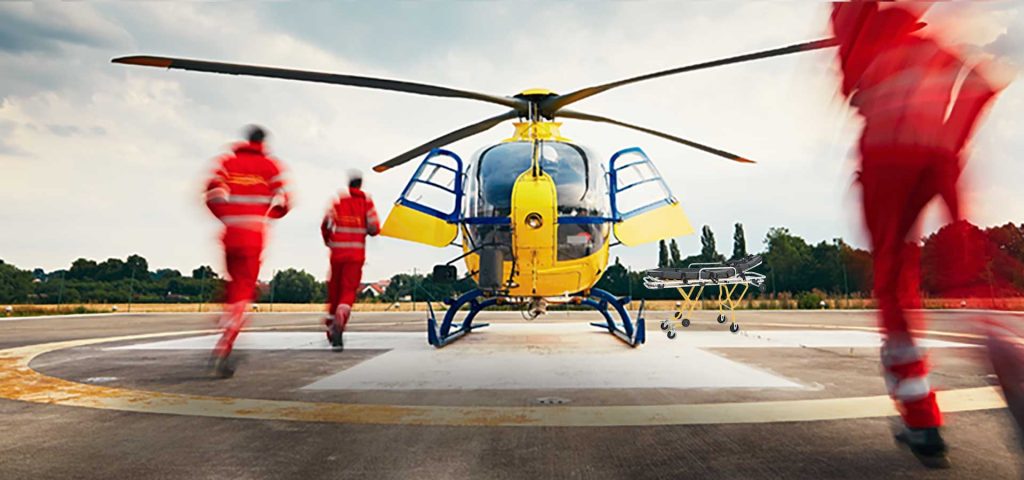
Team Composition
Ground Ambulance Crews
Ground ambulance crews usually consist of two or more members, depending on the jurisdiction and the level of care required. The team typically includes at least one EMT and one paramedic. This composition allows for a combination of basic and advanced life support expertise, ensuring that patients receive appropriate care based on their condition.
The EMT provides initial assessment and intervention, such as CPR, bleeding control, and basic airway management. The paramedic, with their advanced training, can perform more complex interventions, administer additional medications, and interpret ECGs. This team-based approach allows for collaboration and support, ensuring that patients receive the highest level of care possible.
Air Ambulance Medical Teams
Air ambulance medical teams usually consist of highly trained healthcare professionals, including flight nurses, flight paramedics, and experienced pilots. The exact composition of the team may vary depending on the specific requirements of the air ambulance service and the medical needs of the patient.
Flight nurses provide specialized nursing care during air transport, leveraging their experience in critical care or emergency nursing. Flight paramedics bring expertise in prehospital care and advanced life support interventions. The team works closely together to provide seamless care and ensure patient safety throughout the air transport process.
Experienced pilots play a crucial role in the team composition, ensuring safe navigation and rapid transport to the designated medical facility. Effective communication and coordination between team members are essential for the successful delivery of care by air ambulance medical teams.
Cost Considerations
Ground Ambulance Crews
Ground ambulance services are generally more cost-effective compared to air ambulance services. The cost of ground ambulance transport is influenced by factors such as distance, location, and the level of care required. Many healthcare systems and insurance plans cover ground ambulance services, making them more accessible and affordable for patients.
It’s important to note that the cost of ground ambulance transport can vary significantly depending on factors like the jurisdiction, privatization of ambulance services, and the specific medical services provided. Patients should consult their insurance provider or healthcare system to understand the coverage and associated costs for ground ambulance services in their area.
Air Ambulance Medical Teams
Air ambulance services, while providing rapid transportation and specialized care, can be considerably more expensive than ground ambulance services. The cost of air ambulance transport is influenced by factors such as the distance traveled, the complexity of the medical condition, and the type of aircraft utilized. Additionally, air ambulance services often include the cost of a flight nurse, paramedic, and pilot, along with the specialized equipment and technology required for air transport.
It’s important for patients to understand the potential costs involved in air ambulance services and assess whether their insurance plan provides coverage for these services. In some cases, insurance providers may require pre-authorization or a patient’s medical condition to meet specific criteria before covering the costs of air ambulance transport.
Comparing the costs and benefits of ground ambulance services and air ambulance services is crucial, with patients weighing factors such as distance, urgency, and medical needs when making decisions about transportation options.
In conclusion, both ground ambulance crews and air ambulance medical teams play crucial roles in providing emergency medical care and transportation. Ground ambulance crews excel in providing timely care within their service area, utilizing a range of equipment and technology to ensure patient safety and comfort. Air ambulance medical teams, while more specialized and expensive, offer the advantage of rapid transportation to specialized medical facilities, particularly in cases of critical illness or trauma. Understanding the capabilities, scope of practice, and cost considerations of both options can help individuals make informed decisions regarding their emergency medical transportation needs. Always consult with medical professionals and insurance providers to determine the most appropriate and financially viable option for your specific situation.
